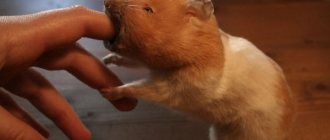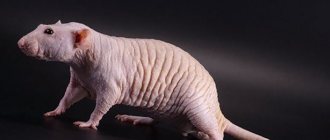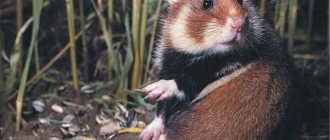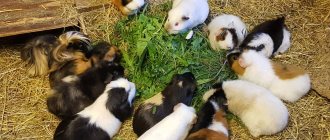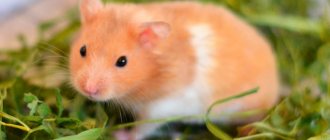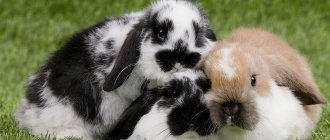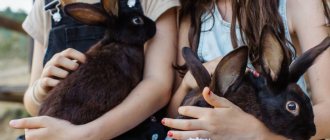In the forests of the wonderful island of Madagascar lives one of the most amazing animals in the world - the little arm, or, as it is also called, the aye-aye. This animal has such an unusual appearance that the natives of Madagascar saw in it a ghost, a fiend of hell, and in general, the source of all their troubles. Having encountered this “terrible” creature, the local population always tried to kill it. As a result of superstitions, and most importantly, due to the destruction of the animal’s habitats, the little arm was on the verge of extinction.
The Madagascar bat (Daubentonia madagascarinensis) is a mammal from the order of primates, a suborder of lemurs, the only representative of the family of bats. This animal was discovered in 1780 by Pierre Sonner, who was engaged in research in the west of Madagascar. He described this creature as a tropical rodent, but later, after long discussions, scientists nevertheless came to the consensus that the aye-aye was not a rodent at all, but a lemur, which, in the course of evolution, deviated somewhat from the general trunk of the group.
Description of the species
The Madagascar bat (Daubentonia madagascariensis) is the only living representative of the family of bats.
The creature looks unusual: brown fur, a long tail, thumbs and crazy eyes. The little hand is considered one of the large nocturnal primates. Scientists classify this species as a lemur.
Pic by Duke Lemur Center / Caters
For the inhabitants of Madagascar, these animals are sacred creatures. There are legends that whoever kills an animal will soon die himself.
The weight of the aye-aye is 3 kg, the length of the tail is 6 cm, and the entire body is 3644 cm, depending on the age of the primate. Large eyes, most often yellow, and huge ears distinguish the little monkey from other species.
It is interesting that the animal is fluffy, however, its paws are without hair. The limbs look like human hands, even have fingers. It was this fact that prevented scientists from deciding which family to assign the discovered species to.
What does aye-aye look like? Photo of the hand
The appearance of the arm is unique. The body is covered with shaggy hair of dark brown or black color; long guard hairs have white tips. The muzzle and underbody are lighter – cream or grayish. The tail is longer than the body, very fluffy. The head is quite large, round, with large, leathery, leaf-shaped ears. The large eyes are bright orange or yellow-green and surrounded by characteristic dark circles. The incisors have a structure similar to that of rodents: very sharp, constantly growing. The photo of the little arm clearly demonstrates its bizarre appearance.
The little hand is the largest representative of nocturnal primates. The body length is 36–44 cm, the tail is 45–55 cm, the weight of the animal rarely exceeds 2.5 kg.
Little arms run and jump on four limbs. The fingers and toes are equipped with long, curved claws, except for the first digit of the hind limbs, which has a real nail.
The most notable feature of the hand is the middle finger on the hand. It is incredibly long and thin and has virtually no soft tissue. The animal uses such a tool, coupled with constantly growing incisors, to obtain food: it gnaws holes in dry wood and pulls out insect larvae (photo below). This finger is also used as a drumstick to tap wood to locate the larva. Science knows of only one other mammal that uses such an unusual method of searching for food - this is the New Guinea small cuscus, which belongs to the marsupial flying squirrels.
Habitat
The species was found on the trapped island of Madagascar. Since there are very few representatives left, it is difficult to observe their behavior.
Scientists believed that the little arm lives on the west coast of the island. Most often, new populations were discovered in rain forests, where there is high humidity. They live along the entire coast in both rain and deciduous forests.
The habitat of nocturnal inhabitants is a nest made of branches and leaves, at a height of 10–15 m above the ground. The housing itself is built within 24 hours.
It was suggested that due to increased humidity, the animals retained their appearance. It is the forest area that is most suitable for the representatives. Little hands were also found in the thickets. The mangrove jungle is becoming another habitat for these creatures.
Tarsier
Many have heard that there is a small animal that lives in the Philippines and is famous for its unusually large eyes. In its homeland it was called “tarsier”. Among mammals, it ranks first in terms of the ratio of eye size to body size. Thanks to this, he was included in the Guinness Book of Records. This small animal with large eyes has a body weight of only 134 grams. Females weigh even less - only 117 grams. Accordingly, they have a small body size, which usually ranges from 10 to 15 centimeters. But their eyes are surprisingly large, and each of them weighs more than the animal's brain. If a person had the same height-to-eye ratio, it would look as if we had grapefruits inserted into our eye sockets.
The tarsier is nocturnal. He navigates very well in the dark, and he is also able to see ultraviolet light. But this baby cannot distinguish colors. The animal is not dangerous to society, but on the contrary, eats various insects and worms. If someone manages to tame it, the tarsier will turn out to be a good assistant to its owner in exterminating parasites. But this cute animal with big eyes has great difficulty getting used to a person and may not get along with him. So, the diet of this big-eyed bird includes spiders, small vertebrates, lizards and insects. To feed, the baby grabs the victim with both paws and does not let go. Interestingly, tarsiers can turn their necks 360°, and this fact used to frighten local residents very much, who thought that the head of these animals was separated from the body.
Features of behavior
As you know, the Madagascar bat is a nocturnal resident and appears only at this time of day.
It was initially assumed that representatives of this species live alone and never move in packs. After some time of observation, Elinor Sterling found out that animals can also live and feed in pairs.
Pic by Duke Lemur Center / Caters
When animals communicate, they make certain sounds that mean different actions. For example, if one of the couple wants to move to another space, he calls his companion. Most often in pairs you can see a female and a male, as well as a mother and child. The rest prefer to stay alone.
Ay-ay, they move through the trees. Only in some cases can they descend to the ground to overcome space.
What kind of animal is this?
Aye-aye, or simply aye-aye, is a mammal classified as a special species of lemur. The little hand represents the only species from the family of the same name. Nevertheless, in appearance it is completely different from either its fellow lemurs or monkeys in general. Scientists note that the Madagascan monkey (a photo of this unusual prosimian is presented in the article) is closer in its kinship to squirrels or cats. Even in its size, the animal resembles a domestic cat.
Diet
The crayfish diet includes:
- insect larvae;
- soft fruit contents;
- coconuts;
- mushrooms;
- growths on tree bark;
- fruits.
Coconut plantations are the most favorite place for animals. It is here that there is an abundance of various kinds of nuts, fruits and vegetables. Before eating a coconut, the animal knocks on it to check the amount of milk inside.
The larvae are caught in a similar way: they tap the birch bark with their middle finger and check for food. After this, the individuals gnaw through the bark, pull out the prey onto the third finger and swallow it.
The creatures also tap fruits, mushrooms and nuts in order to find out the contents, since they consume exclusively the pulp. Such a diet allows representatives of the species to be classified as omnivores.
Nutrition
The little hand is not a predator. It feeds exclusively on insects and their larvae. Living in trees, the animal listens very sensitively to buzzing insects flying past, crickets, caterpillars or worms swarming in the dry bark. Sometimes they can catch butterflies or dragonflies. Larger animals are not attacked and prefer to stay away.
Thanks to the special structure of its front paws, the little arm very carefully taps the bark of trees for the presence of larvae, and carefully examines the branches of the trees on which it lives. The sinewy middle finger is used by the animal as a drumstick, indicating the presence of food.
Then the hunter chews the bark with sharp teeth, takes out the larvae and, using the same thin finger, pushes the food into the throat. It has been officially established that the animal is capable of detecting the movement of insects at a depth of up to four meters.
Loves little arms and fruits. Having found the fruit, she gnaws the pulp. Loves coconuts. She taps them, just like the bark, to determine the amount of coconut milk inside, and then simply chews the nut she likes. The diet includes bamboo and reed. Just like hard fruits, the animal gnaws the hard part and selects the pulp with its finger.
Aye-aye hands have a range of sound signals. With the onset of dusk, animals very actively begin to move through the trees in search of food. At the same time, they make a loud sound, similar to the grunting of a wild boar.
To drive other individuals away from their territories, the little arm can emit a loud cry. He speaks of an aggressive attitude; it is better not to approach such an animal. Sometimes you can hear some sobbing. The animal makes all these sounds in the fight for territories rich in food.
The animal does not play a special role in the food chain of Madagascar. She is not hunted. However, it is an integral part of the island's ecosystem. Interestingly, there are no woodpeckers or birds similar to them on the island. Thanks to the feeding system, the little hand does the “work” of woodpeckers - it cleans the trees of pests, insects and their larvae.
Continuation of the family line
The breeding season of nocturnal creatures is not determined, but for primates this is an uncharacteristic feature. Females develop over 2-3 years, calling partners with cries. They choose a mate on the condition that the male has responded to the call, and mate with everyone who came to him.
Females do not give birth to more than one baby at a time, however, pregnancy lasts 170-172 days. For two months the baby does not leave the mother. She arranges a separate nest for him, where the child should live during this time.
Mother's milk remains the main nutrition for the little individual for the first 7 months. As it grows, the cub stays next to its mother for another 1.5 months.
Little arms, like other animals, mark territory.
- Use urine for marking.
- The cries of the creature allow you to claim ownership of the land.
- Among other things, the individuals themselves mark the territory with scent marks, and this may not always be urine.
Reproduction and lifespan
During the mating season, this species of lemur always lives in pairs. They live together and get food together. Little arms do not reproduce often; the female bears the baby for 5.5-6 months (about 170 days).
In captivity, these lemurs practically do not reproduce at all. Only one cub is always born; scientists have not noticed the appearance of twins or triplets at the same time in one couple.
The birth of a small primate occurs once every two to three years. Before the birth of the offspring, the female very carefully selects a place for the nest, building a large and cozy place with soft bedding for the birth of the baby.
The little aye-aye feeds on the female's milk for up to seven months, after which it gradually switches to feeding on its own, but still remains with its mother for some time (usually male cubs are up to one year old, females up to two).
an animal , their numbers are very small and the species is on the verge of extinction. For their breeding, special reservations are allocated where people are prohibited from entering.
In addition to all this, to preserve the population, this species is listed in the International Red Book. At the moment, no more than fifty zoos in the world have the Madagascan monkey as their pets.
Because of its unusualness and whimsicality, the little arm became very popular and was reproduced several times in cartoons. In this regard, various toys, images and pictures of little arms .
I really want to hope that through the joint efforts of inspired, caring people and zoological scientists it will be possible to preserve, and preferably increase, the population of these bizarre and interesting animals on our planet.
Threats
One of the main reasons for the extinction of the species is deforestation. Among other things, humans cause considerable harm to representatives.
Photo: Duke Lemur Center/SWNS.com
Many people believe that if they encounter a Madagascar monkey, death awaits the traveler. That is why superstitious people try to kill the animal quickly in order to avoid the curse. However, even the one who dares to kill the creature will pass away within a year.
Farmers pose a significant threat to animals. Since they feed on plantations, many people mistake them for rodents and also try to exterminate them.
Chinchilla
The animal is a native American inhabitant of the order of rodents. It is difficult to spot the animal in the wild; their population is small and lives in the mountains. Because of their incredibly soft and beautiful skin, chinchillas were practically exterminated back in the 19th century.
The animal has a round head on a short neck, long whiskers (up to 10 cm) and round, large ears (up to 5 cm). There is a membrane in the concha of the ear that covers the ear canal when the chinchilla bathes in the sand. It grows in length up to 25-35 cm with a tail up to 15-20 cm, weighs slightly less than a kilogram. The animal is very flexible and can crawl into the smallest gap. The presence of long, strong hind legs (2 times larger than the front ones) allows him to make high, two-meter jumps.
Nowadays, the rodent has gained popularity as a pet. It is recommended to keep him in a spacious cage or enclosure and, after getting used to it, let him out for indoor walks.
Interesting Facts
For the inhabitants of the island, the Madagascar hand-foot is an ominous prophecy, so people are afraid to pronounce the name of this animal.
In cinema, the creature was presented in the cartoon “Madagascar”. One of the representatives of the animal society of all parts is named Maurice. Also in the film "Penguins of Madagascar" the little hand became one of the main characters.
In the Malagasy language, the real name of the endangered species has never been discovered, since naming it is prohibited. In the folklore of the Malagasy there is not a single mention of the Madagascar hand-foot, also due to superstition.
They actually exist
Meanwhile, zebroids actually exist. This is a hybrid of a horse and a zebra. As a rule, a horse is the mother of such a foal, and a zebra acts as its father.
The zebroid or zorses, as they are called in the English-speaking world, is an unusually beautiful and interesting animal.
From zebras, such hybrids inherit a wild, freedom-loving disposition and a proud, independent character. However, hybrids also get the curiosity and wariness inherent in zebras.
Zebroids take all the best from horses, from color to qualities such as loyalty, friendliness, intelligence, and endurance.
Millions of people find peace of mind in parked cars during quarantine
Richard Gere and his wife celebrated their wedding anniversary and showed archival photos
Adele returns: the singer is back on social networks and thanks health workers
Zebroids are not rare animals at all, but practically nothing is known about them in Europe. But in Africa they are specially bred, just like ordinary horses.
Hybrids have been used since ancient times as “trekking animals”, that is, they transport people and various not particularly heavy or bulky cargo through “hard”, complex landscapes.
Zebroids are much hardier than ordinary horses, they require much less water, and they can feed on almost anything they can find under their feet. In addition, hybrids have better health, they practically do not get sick.
Apocalypse in reality. A powerful sandstorm covered the capital of Niger: video
50 Shades of Dakota Johnson: the actress presents the new film “Assistant to the Star”
Talk about him with friends: how a girl can develop a sense of masculinity in a guy
Species protection
The Madagascar bat is listed in the Red Book. Nowadays you will not find animals in forests and plantations in search of food. Most representatives of this species were transported to zoos, but only to the largest ones. Recently, a baby was born in Denver, which became a real sensation in the animal world.
The International Union for Conservation of Nature is creating all the conditions to preserve the endangered species.
At the request of representatives of the society, Madagascan arms were sent to the island of Nosy-Mangabe. Residents of the area were not allowed near the animals. The area is considered sacred, so people did not touch a single branch located there.
Notes
- ↑ Gladkova T. D. Primates squad // Animal life. Volume 7. Mammals / ed. V. E. Sokolova. — 2nd ed. - M.: Education, 1989. - P. 129-130. — 558 p. — ISBN 5-09-001434-5
- ↑ Jolly E., Albignac R., Petter J.-J. Lemurs // Madagascar (Series: Golden Fund of the Biosphere) / trans. from English, scientific ed. B. D. Vasiliev, resp. ed. series by V. E. Sokolov. - M.: Progress, 1990. - P. 242-243. — 296 p. — ISBN 5-01-002049-1
- ↑ Biological encyclopedic dictionary / Ch. ed. M. S. Gilyarov; Editorial team: A. A. Baev, G. G. Vinberg, G. A. Zavarzin, etc. - M.: Sov. encyclopedia, 1986. - P. 549. - 831 p. — 100,000 copies.
- ↑ Sokolov V. E.
Five-language dictionary of animal names. Mammals. Latin, Russian, English, German, French. / under the general editorship of academician. V. E. Sokolova. - M.: Rus. lang., 1984. - P. 84. - 10,000 copies. - ↑ Fisher D., Simon N., Vincent D. The Red Book. Wildlife in danger / trans. from English, ed. A. G. Bannikova. - M.: Progress, 1976. - P. 50-54. — 478 p.
- "Big Encyclopedia" ed. Yuzhakova, 1901-1909.
- ↑ “Dictionary of modern Russian literary language” in 20 volumes, vol. 1, 1991.
- Bo Beolens, Michael Watkins, and Mike Grayson.
The eponym dictionary of mammals. - Baltimore: The Johns Hopkins University Press, 2009. - P. 101. - 574 p. — ISBN 978-0-8018-9304-9. - Vasiliev D. B.
Afterword // Madagascar / Rep. ed. series by V. E. Sokolov. - M.: Progress, 1990. - (Golden Fund of the Biosphere). — ISBN 5-01-002049-1.. — P. 276.
Breeding in captivity
Most aye-ayes live up to 26 years. However, there are several nature reserves where people are strictly prohibited from entering, much less feeding the animals themselves. Thanks to the proper arrangement of zoos and breeding sites, the population began to grow as natural mating occurs.
Most forest inhabitants reproduce quite rarely in captivity, although there have already been several such cases.
The animal looks quite interesting, since large eyes, a fluffy and elongated tail, as well as paws similar to human fingers, significantly distinguish them from other species.
Great article 3
Scientific classification
Madagascar bat
(ay-ay) – the rarest mammal on the planet. According to data from ten years ago, only 30-40 individuals were known to exist. This is the only representative of the family of prosimians of the order of prosimians. Lives in the forests. Spends most of its life in trees. It is awake exclusively at night, 80% of this time is spent searching for food.
Their delicacies are:
- Insect larvae;
- Nuts;
- Nectar of some flowers;
- Plant shoots.
This is a very smart animal, which, looking for larvae on fallen rotten trees, first listens for a long time, determining the vibration coming from within. If there is one, then the little arm gnaws a hole in the trunk and sticks its long, thin middle finger into it.
During the day, the aye-aye sleeps in a hollow, and prefers to use one dwelling for a long time. Mammals live quite a long time, when kept for up to 26 years.

